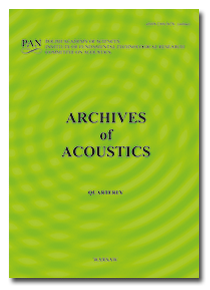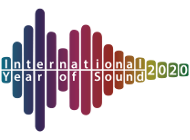Archives of Acoustics,
18, 2, pp. 311-321, 1993
Piezomagnetic and ultrasonic properties of the Fe-Cu-Nb-Si-B metallic glass after heat-treatment
An Fe73.5Cu1Nb3Si16·5B6 alloy was cast as an initially amorphous ribbon. The samples about 50-51 mm long and 4 mm wide were cut out from the 10mm wide and about 15μm thick ribbon and annealed at the temperatures over 300°C (to 550°C) in the transverse magnetic field H_⊥ and also without magnetic field (H =0). Before nanocrystallization this alloy exhibits the saturation magnetostriction equal to (20-23)x10^-6. The annealing at the temperatures over 400°C in the transverse magnetic field increases the maximum value of the magnetomechanical coupling coefficient (k_m) from 0.10-0.15 (for as quenched state) to over 0.45. The magnetic anisotropy, introduced during the heat-treatment in the transverse magnetic field, is responsible for the predominant vector rotation mechanism which increases the magnetomechanical coupling and ΔE-effect.
Full Text:
PDF
Copyright © Polish Academy of Sciences & Institute of Fundamental Technological Research (IPPT PAN).
References
Y. YOSHIZAWA, S. OGUMA and K. YAMAUCHI, New Fe-based soft magnetic alloys composed of ultrafine grain structure, J. Appl. Phys. 64, 10, 6044-6046 (1988).
Y. YOSHIIZAWA and K. YAMAUCHI, Effects of magnetic field annealing on magnetic properties in ultrafine crystalline Fe-Cu-Nb-Si-B alloys, IEEE Trans. Magn. MAG-25, 5, 3324-3326 (1989).
G. HERZERGrain structure and magnetism of nanocrystalline ferromagnetics, IEEE Trans. Magn. MAG-25, 5, 3327-3330 (1989).





